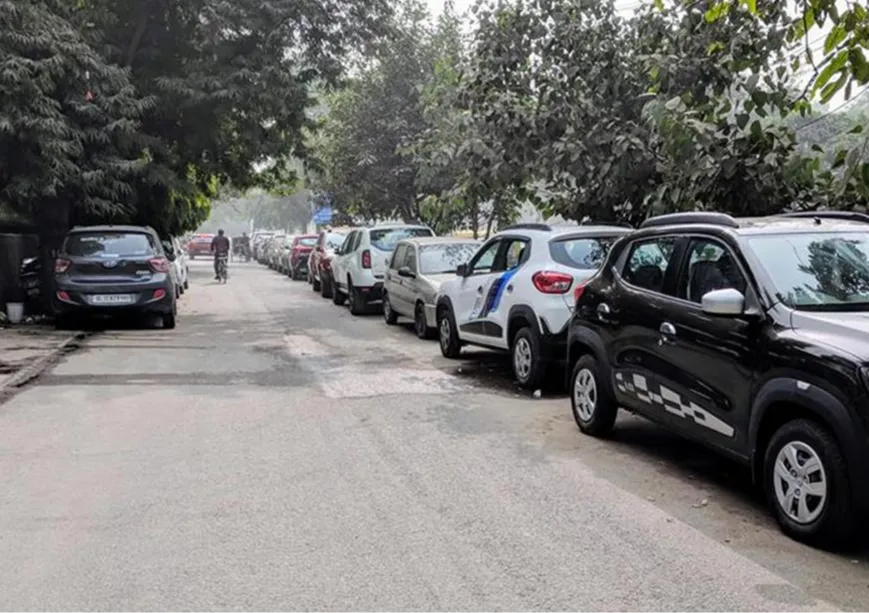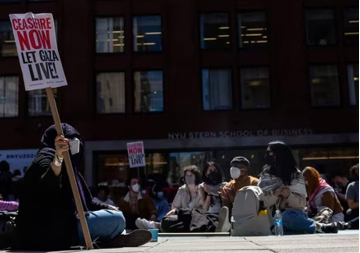
The proliferation of private automobiles, driven by an improved standard of living and the affordability of personal transportation across various income brackets within urban areas, has led to a notable surge in vehicle ownership. Predominantly led by two-wheelers (TW) and four-wheelers (FW), this surge has heightened traffic density on road networks. The cumulative count of registered motor vehicles escalated to 295.8 million in 2019, demonstrating a Compound Annual Growth Rate (CAGR) of 9.91 percent between 2009 and 2019. TW constituted 75 percent of the total registered vehicles in 2019, exhibiting the most rapid growth, with a CAGR of 10.47 percent over the past decade, followed closely by FW at 10.29 percent.
Among the 48 million-plus cities documented by the Ministry of Road Transport & Highways (MoRTH) in 2018-19, Delhi registered the highest vehicle count at 11.4 million, trailed by Faridabad (8.6 million), Bengaluru (8.1 million), Chennai (6 million), and Ahmedabad (4.3 million), collectively representing 41.49 percent of the total vehicles registered in 2019. Moreover, the prevalence of TW in the total pool of registered motor vehicles in India surged to 79 percent in 2019 from 8.8 percent in 1951, underscoring a significant evolution in vehicle preferences over the decades.
The economical operation of motorised TW has made them the predominant mode of transport in many of India’s second-tier cities.
Each new vehicle requires dedicated parking spaces at both their origin and destination points, irrespective of the purpose of the trip. Typically, a vehicle remains parked for 23 hours daily, utilising multiple parking spots weekly. Parking challenges are increasingly prominent in Central Business District (CBD) areas and specific high-footfall zones like shopping centres. With concentrated commercial, governmental, social, and religious activities in core city areas, parking scarcity persists throughout the day in major and medium-sized cities. The economical operation of motorised TW has made them the predominant mode of transport in many of India’s second-tier cities.
The boom in vehicle ownership has made on-street parking a persistent challenge, where fulfilling conflicting objectives amidst escalating parking space demands poses a significant dilemma.
On-street parking scenarios in Indian cities
Across numerous cities, the demand for parking surpasses the available supply, resulting in various adverse consequences. These include a scarcity of parking spaces, heightened emissions due to vehicle idling, and increased strain on roadways and pedestrian pathways resulting from haphazard on-street parking practices.
Empirical evidence from research conducted across Indian cities underscores the severity of the issue. For example, studies indicate that on-street parking reduces urban road space by an average of 35 percent in Kolkata, 14 percent in Delhi, 56 percent in Jaipur, and 45 percent in Kanpur. Even in much smaller cities like Godhara in Gujarat, the demand for on-street parking exceeds the available supply by 2.5 times the capacity. Moreover, across many Indian urban centres, the parking index (ratio of parking demand to supply) consistently exceeds 100 percent.
Across numerous cities, the demand for parking surpasses the available supply, resulting in various adverse consequences.
Research from the Centre for Science and Environment highlights that based on the city’s size and motorisation rate, the annual demand for additional parking spaces will be substantial. For instance, in Delhi, this demand can be equivalent to as much as 310 football fields, while in Chennai, it amounts to 100 fields, and in Chandigarh, 58 fields.
On-street parking management in India
The administration of on-street parking, notably within the CBDs, presents a considerable challenge for numerous municipal authorities. The demand management strategies under the National Urban Transport Policy 2006 (NUTP) emphasise the imposition of parking fees commensurate with land valuation costs. Additionally, it recommends diverse measures such as establishing park-and-ride facilities at transit nodes, a tiered system of parking fees, and creating multi-level parking structures in urban cores. The segment addressing sustainable urban transport in the National Mission for Sustainable Habitat delineates strategies, objectives, and action plans to facilitate the transition toward sustainable mobility in urban environments. The chapter also delineates approaches to formulating a “parking policy aimed at reducing parking demand,” echoing concerns and proposed solutions articulated by the Environmental Pollution Control Authority (EPCA) in its submission to the Supreme Court as well as the NUTP of 2006.
Consequently, numerous cities across India have framed tailored parking policies. Cities such as Surat, Ahmedabad, Delhi, Pune, Kolkata, Bengaluru, and Chandigarh, among others, have formulated parking policies for their respective urban areas.
The segment addressing sustainable urban transport in the National Mission for Sustainable Habitat delineates strategies, objectives, and action plans to facilitate the transition toward sustainable mobility in urban environments.
However, examining these policies reveals an inherent policy incoherence attributable to inherent and city-specific challenges, accounting for regional characteristics and specific urban issues. Furthermore, the objectives outlined in the majority of parking policies are subjective. While some policy objectives lack corresponding directives, certain city directives are not aligned with specific policy objectives.
The way forward
The development of city-specific parking policies represents a crucial initiative undertaken by select urban local authorities to address the issue of parking. However, the extent of detail and effectiveness of these policies remain a significant concern in the absence of measurable outcomes of their practical implementation by local governments. This lacuna can be addressed if the policy directives are aligned with the policy objectives.
Furthermore, policy formulation alone does not suffice, as municipal corporations are required to establish parking management committees to execute the localised plans effectively. They must also engage private agencies for operational tasks and enforcement, such as addressing illegal parking and non-payment of parking fees. It is essential for each policy to explicitly specify the responsibilities of contractors and enforcement agencies and whether they are authorised to impose penalties. Clarity regarding the distinct roles of local bodies and traffic police is imperative to prevent administrative overlaps and ensure efficient coordination among institutional stakeholders.
Policy formulation alone does not suffice, as municipal corporations are required to establish parking management committees to execute the localised plans effectively.
The imperative of building capacity among local authorities becomes paramount if a municipality opts not to engage in contracting parking management services. Organisations such as the Ola Mobility Institute (OMI), the Institute for Transportation and Development Policy (ITDP), and the Centre for Science and Environment (CSE) have endeavoured to formulate guidelines for urban parking management. Nevertheless, personalised training and practical demonstrations utilising these tools are paramount to ensuring that smaller and medium-sized municipalities can effectively formulate and implement parking strategies efficiently.
Another crucial aspect requiring attention from ULBs is promoting citizen involvement at the onset of the parking management planning process. Conducting participatory surveys among citizens is essential to comprehend key concerns, ascertain requirements and expectations, and delineate strategies for achieving objectives and addressing issues according to citizen perspectives.
ULBs must establish parking fees conducive to incentivising the transition to public transportation, contingent upon the availability of a secure, dependable, efficient, and economically viable public transit network within the urban area. Discrepancies between prevailing parking tariffs and those commensurate with the real estate valuation of the city are notably significant across most urban centres. This implicit subsidy to private vehicle owners imposes a financial burden on cities, manifesting inequitable economic outcomes and exacerbating traffic congestion.
Discrepancies between prevailing parking tariffs and those commensurate with the real estate valuation of the city are notably significant across most urban centres.
Beyond the economic toll of parking, Indian municipalities incur substantial environmental and societal costs attributable to escalating demands for complimentary parking spaces. While parking fees may ostensibly serve as a revenue-generating mechanism, indiscriminate conversion of green spaces into parking lots solely for enhanced financial returns must be discouraged. Moreover, the financial framework must be structured to ensure that proceeds from parking fees are earmarked to enhance non-motorised transportation (NMT) infrastructure and bolster public transit systems within the city.
Nandan Dawda is a Fellow with the Urban Studies programme at the Observer Research Foundation
The views expressed above belong to the author(s). ORF research and analyses now available on Telegram! Click here to access our curated content — blogs, longforms and interviews.




 PREV
PREV


